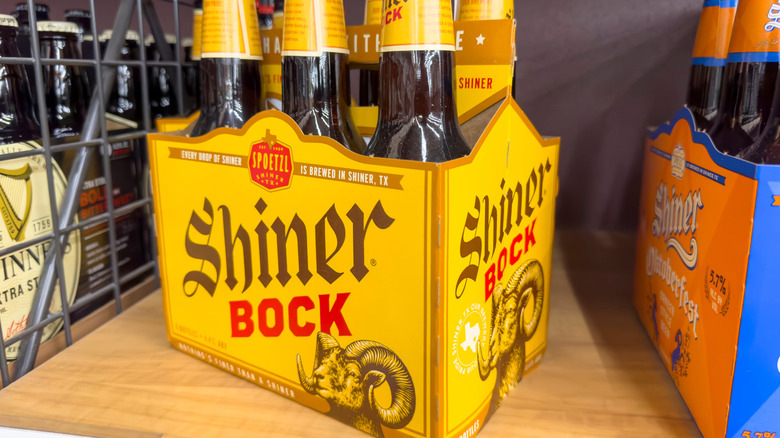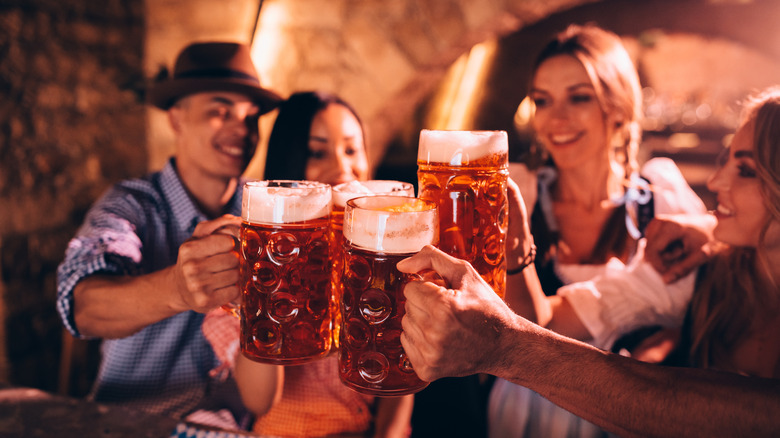The Grainy Ingredient That Distinguishes A Bock From Other Beers
There are so many different beer styles out there that teasing out the unique details amongst them can be dizzying. But when it comes to bock beers, there's one ingredient you can easily point to: malt. Malt gives the beer a smooth taste with only a slight bitterness, and bocks in particular tend to have a lot of the stuff. But not just any malt will do. The traditional bock is brewed with lager yeast and Munich malt. Spaten Brewery of Munich, Germany created this specialized malt in the late 1830s to add a distinct light brown color and aroma to beer. Spaten Brewery's product gives beer a toasty, almost grainy flavor, and an inviting scent with hints of sweetness. Today, Munich malt is available to craft brewers and is considered a necessary ingredient to enhance the malt flavor and scent of a bock beer.
Besides the addition of malt, bock beer gets its unique taste from a fermentation technique known as lagering, in which dedicated lager yeast are fermented at relatively cool temperatures for long periods of time compared to other brewing styles. If a particular color or flavor is the goal of the brewer, then additional types of malt may be added. Although bock beers tend to have an approximate alcohol content of 6.5%, the lengthy fermentation and aging period makes the beer remarkably smooth with a hearty flavor.
Bock beer comes in a variety of sub-styles
As for where exactly it came from, bock beer dates back to the 14th century, when it was first brewed in the northern German town of Einbeck. According to legend, when the beer made its way to the southern city of Munich, the Bavarians who lived there mispronounced its name. They called it ein bock (drawing on the German word for goat) and the name eventually stuck. Because of the slip in pronunciation, bock beers are sometimes advertised with a goat.
Naturally, a beer with such a long history has experienced some changes to its original recipe. Each modification created a slightly different style of bock beer. These include the doppelbock, which is essentially an intense version of the original with a very dark color, higher alcohol, and more robust malt character. Then, there's the even more intensely flavored eisbock, which comes courtesy of a special brewing process that includes freezing — though we still don't recommend letting any beer get to freezing temps once it's been bottled. The maibock (also sometimes called a hellesbock) has a lighter color but more hoppy taste (hops are what most often give beer a bitter edge). Meanwhile, the weizenbock has a spicy, fruity flavor that may bring to mind a wheat beer.

